
The increase in rail traffic on the high-speed network and the start-up of new sections requires a transformation at the Clara Campoamor Chamartín Station, one of the main axes of Spain’s long-, medium-, and short-distance railway. Faced with this need, Ferrovial is embarking on the Chamartín Madrid Nuevo Norte project.
The work encompasses two interconnected projects. On the one hand, there’s the construction of foundations and piles between tracks 13 and 17; on the other, there’s the conversion of tracks 14 and 15 to the international gauge, also called UIC.
The measures in the two projects constitute an essential step for the development of the city of Madrid. Chamartín Station is established as the central hub of the mobility of the future that’s fully integrated with the city; it is a reference point both nationally and internationally.
The comprehensive project also comprises remodeling of commuter tracks and platforms, providing more space for travelers by increasing the station lobby, and interconnecting rail transit with other modes of transportation.
What does the project consist of?
The following map shows the entire operation: the foundations at the southern head of the station; the conversion of tracks 14 and 15 (in green), which are located in the center of the station, between the conventional train tracks (in red) and the High-speed tracks (in blue); and the new north underpass.

In the future, the final structure of Chamartín Station’s southern head will consist of 2,407 piles and 1,132 piers, which will cover 212,000 square meters of tracks and facilities, supporting the large slab where Madrid Nuevo Norte’s grand Central Park will be located.
In this work, we have carried out the first 49 piles and the first 33 piers for the future station; these are located between tracks 13 (conventional train) and 17 (high-speed). This procedure is considered the beginning of construction for the Madrid Nuevo Norte project, and it was inaugurated by the Minister of Transport, the President of Adif, and other important figures on November 7, 2022.
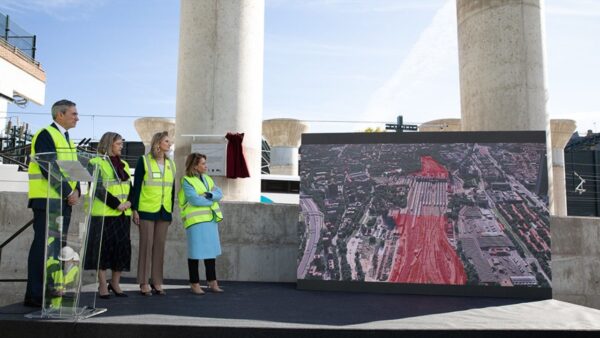
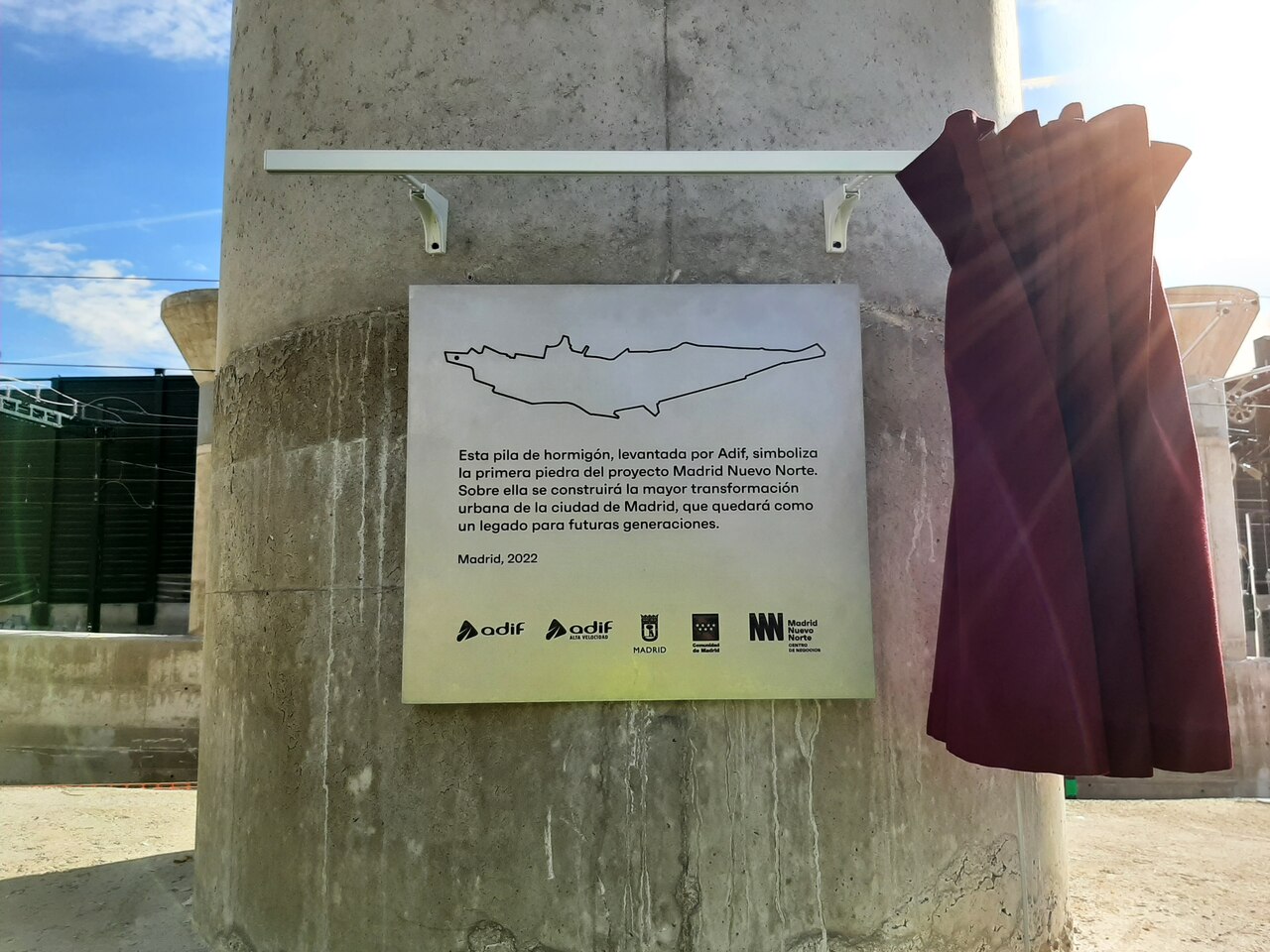
But what are piles, plinths, and piers?
Piles are deep, reinforced concrete foundations. For this project, they have been made 14 to 18 meters deep and 1.80 meters in diameter; they will transmit the loads from the station’s future slab to a resistant layer of soil. Piers are built on these piles, standing approximately 10 meters tall and 1.50 meters in diameter.
The horizontal safety distance between the track and the pile must be 5.40 m for Iberian gauge tracks and 5.10 m for international gauge tracks. In cases where the necessary clearance is met, the vertical structure is defined by the so-called pile-pier system; in cases where this condition is not met, a protective plinth is built under the piers.
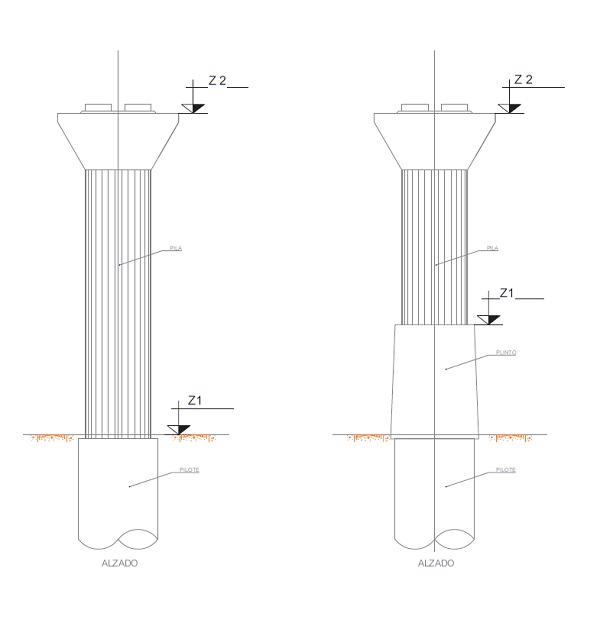
Section of the pile-pier and pile-plinth-pier structure
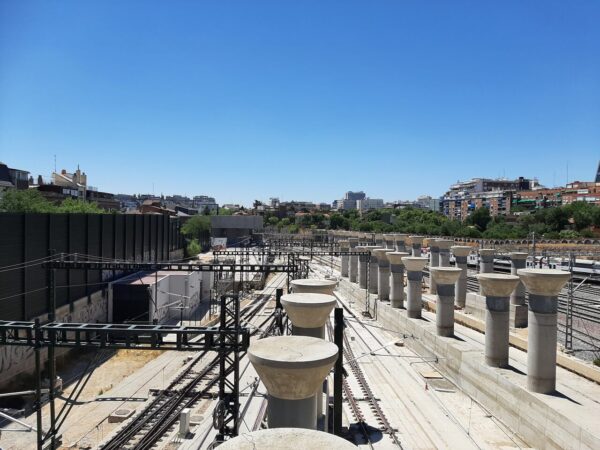
Finished foundations: in the foreground, piles with a plinth; in the back, pile-pier structures
A working station and a limited space
To carry out this project, we have faced two main challenges: operating in an operational station and having a limited, shared space.
During construction, the Chamartín station can never stop being operational for travelers and goods; this is true for high-speed traffic as well as commuter and conventional trains. This entails carrying out most of the work at night, in the so-called ”maintenance period” at night for blocking catenary and track operation that Adif has established for carrying out works – barely three hours each day.
In addition to the railway operation, the station is immersed in numerous remodeling projects, which adds to the complexity of coordinating business activities. This means that all our work’s operations must be aligned with the other projects, all running at the same time in the same space.
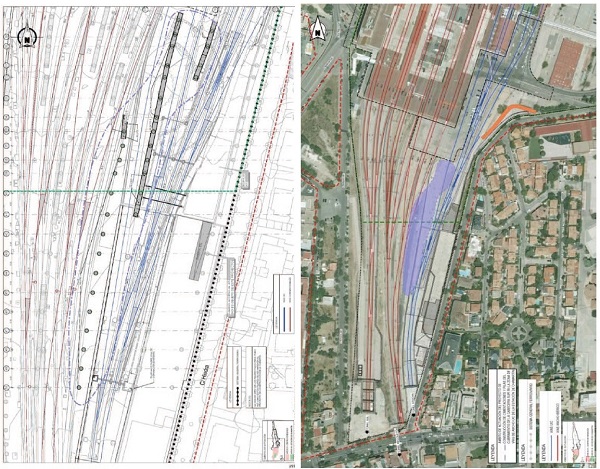
Floor plans: foundations (piles, piers, and plinths) at the south head of the station.
Conventional train tracks in red. High-speed tracks in blue.
In addition, due to the shortage of space for positioning machinery (a pile driver, crane for lifting frameworks, a pump, concrete tanks…), it is impossible to pour more than one pile of concrete every night since the machinery has to work in phases. Once the concrete for a pile has been poured, we have to wait until the following night for the concrete to become strong enough to withstand excavation for the next pile.
An incremental caisson, the technical solution
As a result of the work, tracks 14 and 15, which previously operated on Iberian gauge (1,668 mm of distance between lanes), have been converted to international gauge or UIC (1,435 mm) and are thus integrated into the station’s high-speed sector. The project also includes a new underpass for the internal connection to the station’s railyard: an incremental caisson.
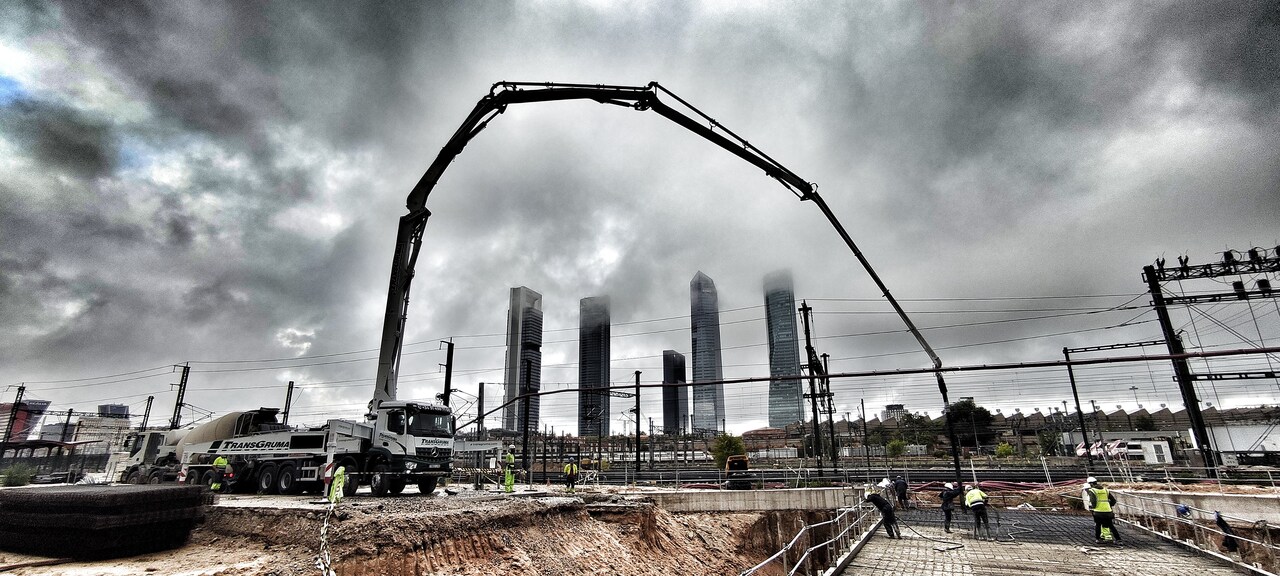
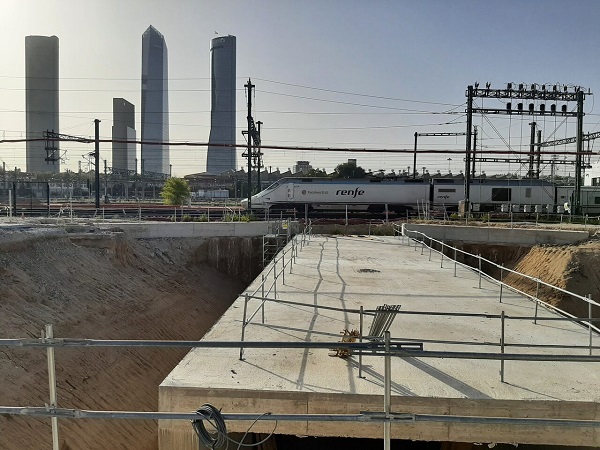
Caisson executed on site, ready for pushing
An incremental caisson is a reinforced concrete structure in the form of a closed frame built at the construction site but not in its final location due to the impossibility of stopping railway traffic during the execution of the work.
At the work’s end, the frame is put into its final position and the track in its initial position. The pushing tasks are always carried out during the nighttime maintenance period, thereby minimizing the impact on the tracks and, as a result, on railway traffic.
The team, the key to success
Managing a project of this size within Chamartín Station requires having personnel who are specialized and experienced in large-scale station construction projects. The team of professionals in the Railway Department has been essential for the success of a project of this magnitude and complexity.





1 comment
URL
25 of October of 2024
... [Trackback] [...] Read More: blog.ferrovial.com/en/2023/07/chamartin-madrid-nuevo-norte-a-complex-project/ [...]